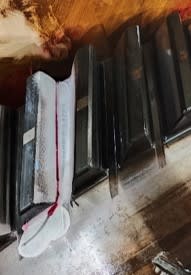dummycoin
Automotive
- Jul 3, 2017
- 2

Fellas
I have this crack in idle double helical gear. Continuous monitoring and mapping are in process.
Stopping the Machine is out of question. New gears will take 3 months to reach the plant.
In the meantime, to avoid breakdown, I need to know of any temporary countermeasures are possible.
We are concerned about distortions, if welded. Not sure about the strength of reinforcement.
Any thoughts on this guys?
I appreciate your time and support, in advance. Thanks.
